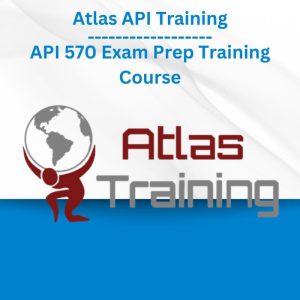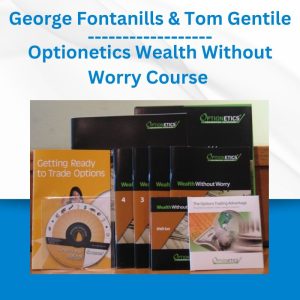*** Proof of Product ***
Exploring the Essential Features of “I Am That: The Pervasive Nectar of Non-Duality – Collection – Mary Reilly Nichols”
The experience of “I Am” consciousness is an enlivening current found throughout the yoga canon as well as a central axiom of Western mystical traditions. Most throughly articulated as a method of liberation in Tantric teachings, the breath-aligned “Ham-Sah” mantra is a practical tool for entering the easy ecstasy of non-dual awareness. It is simple, accessible and ever-available, as it shimmers at the heart of the entire body of yoga philosophy and technology.
In this four week course, we will practice the mantra and contemplate its universal meaning as it is expressed in the world’s esoteric traditions, as well as in classical Vedic and Tantric enlightenment literature.
Each session will include textual study, practical instruction, and an exploration of the mantra as it appears in diverse cultural and scriptural contexts.
Module 1: I Am Consciousness
In session one, we examine the recurrence in myth, poetry and literature of variants of the phrase “I Am That,” to understand how it expresses a universal feature of unitive human consciousness known as samadhi or non-dual awareness. We explore the psychological power of self-concept and its linguistic underpinning in words and self-talk. Through the lens of “I Am That,” we appraise Patanjali’s teachings on the breath and Self knowledge as well as formulae for transformative Self-awareness found in the Upanishads and the Bhagavad Gita.
Module 2: The Yogic Essence of Self-Inquiry
Advaita Vedanta, the non-dual school of Self-inquiry, prescribes the simple technique of persistently asking, “Who Am I?”, for obtaining the prize of spiritual liberation. In session two, we will pursue this heroic quest through the writings of the 9th Century sage, Shankara and through some illuminating and humorous Self-Inquiry stories in the Yoga Vasistha. We will meet the disabled teenage Guru, Ashtavakra, who taught the ego-obliterating secret of “I Am That” through the “apophatic”, or way of negation. We will also introduce two great 20th century masters of Self-Inquiry, Ramana Maharshi and Nisargadatta.
Module 3: Tantric Recognition and Romance
In session three, using Tantric principles, we yoke the power of eros to the experience of the union of opposites inherent in the breath. Drawing from the Tantras of Kashmiri Shaivism, we apply instructions and insights from the Vijnana Bhairava Tantra as well as the Sutras on Recognition. We will apprehend all mantra repetition as active Self-recognition. Mapping Ham Sah awareness onto the subtle body, we will develop the sense of the “prana linga” the pranic force that surges through the central channel, and how to cultivate it.
Module 4: I Am Vibration
In session four, we encounter the Tantric teachings of the ecstatic text called the Kularnava Tantra, which pours out maximal homage to “Ham Sah” as a vehicle of ascent. We will study the significance of the geometric Shri Yantra and recognize its relationship to the subtle body. There will be an experiential introduction to the doctrine of Vibration or “Spanda,” its relationship to Om, to Hatha Yoga, and how it can take us to total liberation.
Students who take this course will:
Ham Sah or So’ham? How and why do these mantras differ? Is one preferable to the other?
What is meant by these statements: I Am; I Am That; I Am That I Am ? What is meant by “That”? Who is the “I”?
The transformation of identity or Self-concept as the pivot of liberating spiritual attainment.
Stories and concepts from the Yoga canon and world wisdom traditions that can be used to empower your teaching and practice of yoga and meditation.
The keys to repeating a mantra effectively.
Yoga asana as mantra.
How the pervasive nectar of eros can be cultivated in ‘ordinary’ events.
A fun introduction to the linguistic mysticism of Kashmir Shaivism and of diverse sacred traditions the world over.
Understanding the three “malas” – veils of egoic illusion – and how Ham-Sah penetrates them.
How to localize the breath within the central channel and easily find and enter the “dvadashanta” – the space between the breaths. How to find and wield your “prana danda” or pranic “stick”.
How to incorporate the Power of Shri Yantra.
Personal stories of living with the Siddha Guru, Swami Muktananda, and his powerful transmission of the Ham Sah mantra.
Author
Mary Reilly Nichols
Mary Reilly Nichols, Director of Nalanda Institute’s Yoga, Mind & Spirit teacher training program has been teaching yoga for over 30 years. She teaches yoga from the perspective of non-duality offered in the Upanishads, Advaita Vedanta, as well as in the Tantric methods of Kashmiri Shaivism and Kundalini Yoga. She holds a BA in anthropology from Harvard University, is a devoted student of Muktananda, and completed five years of residency in meditation ashrams in both India and the US. Currently, Nichols teaches stress management in psychiatric settings and is involved in ongoing research on the mind/body benefits of yoga and meditation.
Please see the full list of alternative group-buy courses available here: https://lunacourse.com/shop/









